1. Consider the following statements :
- Viruses are particles that infect or enter our cells and then use the cell’s genetic machinery to make copies of themselves and subsequently spread to surrounding uninfected cells.
- Cancer cells often have impaired antiviral defenses that make them susceptible to infection
- Oncolytic viruses infect, replicate, in natural cells and causes cancer in body.
Which of the statements given above is /are correct?
- 1 only
- 1 and 2 only
- 2 and 3 only
- 1, 2 and 3
2. Recently term ‘blood batteries’ seen in news, related to
- Lead acid battery
- Bone marrow
- Lithium ion battery
- Spleen
3. Which among the following causes avian influenza “bird flu“in human
- H5N1
- H1N1
- H3N2
- H9N2
Which of the statements given above is /are correct?
- 1, 2 and 3 only
- 1 and 4 only
- 2,3 and 4 only
- 3 and 4 only
4. With reference to the Nairobi flies sometimes mentioned in the news, consider the following statements
- They are Kenyan flies which releases a potent acidic substance that causes skin burns.
- These flies do not bite .
- Generally the use of bright light is recommended to repel these flies.
Which of the statements given above is /are correct?
- 1 and 2 only
- 2 only
- 1 and 3 only
- 1, 2 and 3
5. Consider the following matches:
| Vitamin | Disease | |
| 1 | A | Night blindness |
| 2 | B | Rickets |
| 3 | C | Beri Beri |
| 4 | D | Scurvy |
Which of the statements given above is/are correct?
- 1 only
- 2 and 3 only
- 1 and 3 only
- 1, 2 and 3
Answers with Explanation
1. Consider the following statements :
- Viruses are particles that infect or enter our cells and then use the cell’s genetic machinery to make copies of themselves and subsequently spread to surrounding uninfected cells.
- Cancer cells often have impaired antiviral defenses that make them susceptible to infection
- Oncolytic viruses infect, replicate, in natural cells and causes cancer in body.
Which of the statements given above is /are correct?
- 1 only
- 1 and 2 only
- 2 and 3 only
- 1, 2 and 3
Answer: 2
Explanation
Few Min 23 July
- Recently researchers have made significant improvements to a next-generation cancer therapy that kills tumour cells while leaving healthy tissues intact.
- The treatment uses genetically engineered or naturally occurring microbes — oncolytic viruses — that replicate in cancer cells and overwhelm them.
- The therapy also strengthens the cancer patient’s immune system against the tumour.
- However, this also means that, at times, the oncolytic viruses come up against the body’s natural defence system.
- At the University of Houston’s Centre for Nuclear Receptors and Cell Signaling, researchers used gene editing to cancel out such an immune response, enabling the anti-cancer microbes to work with all their might.
- Along with the breakthrough, last month, in anti-rectal cancer treatment, advances in the use of oncolytic viruses offer hope that cancerous tumours can be eliminated without the use of surgery or debilitating chemotherapy.
Previous issue
- Sometimes those natural killers limit the oncolytic viruses, and so despite the exciting development in the OV field in recent years, there is room for improvement to tackle some limitations, including the relatively weak therapeutic activity and lack of means for effective systemic delivery.
Novel approach
- A region of the gene is deleted which shows to activate the signaling pathway that enables the virus to replicate in normal cells.
- It consists of a new oncolytic virus called FusOn-H2, based on the Herpes simplex 2 virus, (HSV-2), commonly known as genital herpes.
- Arming FusOn-H2 with a chimeric NK engager that can engage the infiltrated natural killer cells with tumour cells can significantly enhance the effectiveness of this virotherapy
Oncolytic Viruses as Cancer Treatment
- Oncolytic viruses infect, replicate, and eventually lyse cancer cells. This is the primary mechanism by which these viruses kill tumor cells. A secondary mechanism has also been proposed, whereby antigens released by dying tumor cells stimulate an antitumor immune response.
- The mechanism behind viral-induced immune modulation is an active area of research. Clinical studies have so far shown that oncolytic viral therapy can enhance the number of tumor-infiltrating lymphocytes, as seen in a trial for late-stage melanoma patients.
Selectivity of Oncolytic Viruses
- An important feature of oncolytic viruses is selectivity – being able to target tumor cells while sparing healthy, normal cells. Replication-selective oncolytic viruses are engineered with deletions of genes which are necessary for normal cell survival, but dispensable in tumor cells.
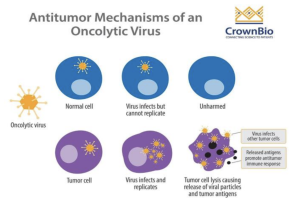
Click Here for A Few Minutes Series
2. Recently term ‘blood batteries’ seen in news, related to
- Lead acid battery
- Bone marrow
- Lithium ion battery
- Spleen
Answer: 3
Explanation
Green energy is touted as one of the best solutions. We are replacing coal with hydroelectric power, fossil fuels with solar energy, petrol and diesel cars with electric vehicles (EV).
EVs are being pitched as cleaner, greener and sustainable. But are they?
- Under the shiny exteriors of an electric vehicle lies a shocking story of blood batteries, extreme poverty and child labour.
- Electric cars use batteries. You know that. But do you know that lithium and cobalt are rare metals that make up these batteries.
- The cobalt in the battery keeps it stable and allows it to operate safely. It is a bluish-gray metal. It is found in the earth’s crust or what we call crustal rocks.
- In addition to its use in jet turbine generators, tool materials, pigments and smartphone batteries, cobalt is also used in lithium-ion batteries. Cobalt is used in about half of electric cars, which is about four to 30 kilograms per battery.
- It is found all over the world in countries such as in Australia, Canada, China, Cuba, South Africa, the United States and the Philippines. But 70 per cent of the total supply comes from one country, the Democratic Republic of the Congo (DRC).
- DRC is the second-largest country in Africa, with a gross domestic product of $49 billion. It is synonymous with conflict, poverty and corruption.
- The world’s largest cobalt deposit is beneath the red earth of the DRC. Some 92 million people live in the DRC and two million rely on cobalt production. They are called Négociants.
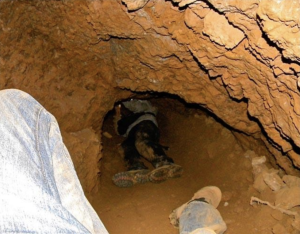
Cobalt mining
Cobalt is mined in two ways in the DRC:
- Industrial (large-scale mining) and artisanal (small-scale mining). So what is the difference between the two?
- There are no labour laws or safety protocols governing artisanal mines in the DRC, where 20-30 per cent of the country’s cobalt is mined. These mines employ some 200,000 miners, according to Transport & Environment, a European clean transport campaign group.
- At least 40,000 of them are children, some as young as six years old, according to the Wilson Centre, a US non-partisan policy forum.
- These children flirt with death daily. They enter vertical tunnels that are too narrow for adults to enter. The children in the mine dig for cobalt under inhumane conditions in a furnace-like environment.
- Although they sometimes use shovels, they typically dig with their bare hands. They are not provided with masks, gloves, work clothes and may only be provided with 20 minutes of oxygen at a time. Yet, these young children dig for hours.
- Upon digging the rock, they crush it, wash it and then take their finds to the market in order to sell them. How much do these children make? Sometimes as little as a dollar.
- Cobalt is a multibillion-dollar industry estimated to be worth $17.39 billion by 2027, according to Statista, a German company specialising in market and company data. But this money never reaches a child who is spotting and extracting the metal. In the poverty-stricken DRC, even a dollar is worth risking one’s life for. Many die trying to make this money.
- In the DRC, at least 80 artisanal miners died between 2014 and 2015, according to UN-run radio station Radio Okapi. In 2019, an accident killed 43 miners.
- Many suffer permanent lung damage, skin infections and other life-changing injuries.
- According to the World Bank, the demand for cobalt will increase by 585 per cent by 2050. The Congolese people wish to ride this wave and escape poverty. For them, sending their children to the mines is not a choice but rather a necessity.
- Many of these children end up working as artisanal miners or as informal workers. Although they are not employed by any company, several companies queue up to purchase their fines.
China and the DRC
- The vast majority of companies dealing in blood batteries are Chinese.
- By far, the largest producer of refined cobalt is China, with 66 per cent, followed by Finland (10 per cent), according to Mining.com. In the last 15 years, Chinese companies have bought out North American and European companies mining in the DRC, according to the New York Times. As of last year, Chinese companies owned 15 of the 19 industrial mines in the DRC.
- China has promised the DRC billions of dollars in investment in the form of infrastructure, schools, and roads in exchange for Congolese cobalt. This is yet another example of how stories involving China never end well.
- In today’s world, China is leaking blood cobalt into the supply chain for electric vehicles. Chinese companies are purchasing cobalt from children in an effort to encourage them to engage in the trade in blood batteries.
- In China’s large-scale industry, workers are abused, discriminated against, beaten and forced to work without contracts and adequate rations. If a worker dies, the Chinese keep the corpse hidden and bribe the family to keep quiet.
It is your electric vehicle that is killing people even before it reaches the road. Did you sign up for this?
- The world’s largest automakers are complicit in these crimes, including Tesla, Volvo, Renault, Mercedes-Benz and Volkswagen, who all source cobalt from Chinese mines in the DRC.
- While they may claim to have a zero-tolerance policy on child labour, they are also aware that there is no way to map their entire supply chains.
- EVs thus run on dirty energy, on blood batteries and this is not a climate solution. This is human rights abuse and the two cannot co-exist. A climate solution should not be at the expense of human life. Long story short, electric vehicles have a long way to go before they can claim to be clean.
Click Here for Few Minutes Series.
3. Which among the following causes avian influenza “bird flu“in human
- H5N1
- H1N1
- H3N2
- H9N2
Which of the statements given above is /are correct?
- 1, 2 and 3 only
- 1 and 4 only
- 2,3 and 4 only
- 3 and 4 only
Answer: 2
Explanation
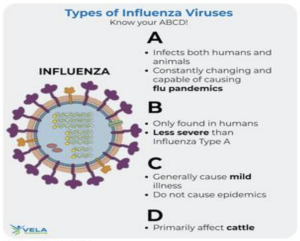
Influenza viruses
Influenza type A viruses are classified into subtypes according to the combinations of different virus surface proteins, hemagglutinin (HA) and neuraminidase (NA)
- For example, a virus that has an HA 7 protein and NA 9 protein is designated as subtype H7N9.
- Human infections are primarily acquired through direct contact with infected animals or contaminated environments.
Influenza A viruses
- can be classified as
- Avian influenza (H5N1, H9N2 etc.)
- Swine influenza(H1N1 and H3N2), or other types of animal influenza viruses
- The most effective way to prevent the disease is vaccination
- Humans can be infected with avian, swine and other zoonotic influenza viruses, such as avian influenza virus subtypes A(H5N1), A(H7N9), and A(H9N2) and swine influenza virus subtypes A(H1N1), A(H1N2) and A(H3N2).
G4 Virus(Strain of H1N1)
- It is recently emerged , infecting Chinese pigs
- G4 strain has the capability of binding to human-type receptors (like, the SARS-CoV-2 virus binds to ACE2 receptors in humans)
Bird flu (avian influenza)
- Can spread from one bird to other birds and animals.
- Migratory birds have been assumed to be largely responsible for long-distance transmission of the virus into India.
- It also spreads through local movement of residential birds and poultry
Click Here for Few Minutes Series Link.
4. With reference to the Nairobi flies sometimes mentioned in the news, consider the following statements
- They are Kenyan flies which releases a potent acidic substance that causes skin burns.
- These flies do not bite .
- Generally the use of bright light is recommended to repel these flies.
Which of the statements given above is /are correct?
- 1 and 2 only
- 2 only
- 1 and 3 only
- 1, 2 and 3
Answer: 1
Explanation
- Around 100 students of an engineering college in East Sikkim have reported skin infections after coming in contact with Nairobi flies,
- The population of Nairobi flies, a species of insect native to East Africa, is growing at a fast pace on campus of the Sikkim Manipal Institute of Technology (SMIT)
- The college administration said infected students had been given medication and were recovering. One student who was recently infected had to undergo surgery in his hand.
Nairobi flies
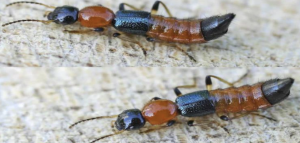
- also called Kenyan flies or dragon bugs, are small, beetle-like insects that belong to two species, Paederus eximius and Paederus sabaeus.
- They are orange and black in colour, and thrive in areas with high rainfall, as has been witnessed in Sikkim in the past few weeks.
- Like most insects, the beetles are attracted by bright light.
How are humans affected by them?
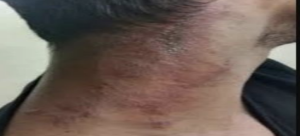
- Usually, the insects attack pests that consume crops and are beneficial for humans — but at times, they come in contact with humans directly are cause harm.
- Health officials say these flies do not bite, but if disturbed while sitting on anyone’s skin, they release a potent acidic substance that causes burns.
- This substance is called pederin, and can cause irritation if it comes in contact with the skin, leading to lesions or unusual marks or colouring on the skin.
- The skin begins to heal in a week or two, but some secondary infections can occur, especially if the victim scratches the irritated skin.
Have there been outbreaks of the disease?
- Major outbreaks have happened in Kenya and other parts of eastern Africa.
- In 1998, unusually heavy rain caused a large number of insects to come into the region, reported the Associated Press.
- Outside Africa, outbreaks have happened in India, Japan, Israel, and Paraguay in the past.
What is the way to protect oneself against Nairobi flies?
- Sleeping under mosquito nets can help. If a fly lands on a person, it should be gently brushed off, and should not be disturbed or touched to reduce the chances of it releasing pederin.
- The area where the flies sits should be washed with soap and water.
- If they are squelched and end up leaving toxic fluids on the skin, care should be taken that unwashed hands do not touch any other part of the body, particularly the eyes.
Click Here for Few Minutes Series Link.
5. Consider the following matches:
| Vitamin | Disease | |
| 1 | A | Night blindness |
| 2 | B | Rickets |
| 3 | C | Beri Beri |
| 4 | D | Scurvy |
Which of the statements given above is/are correct?
- 1 only
- 2 and 3 only
- 1 and 3 only
- 1, 2 and 3
Answer: 1
Explanation
| Vitamin | Deficiency Disease | Source |
| A (Retinol) | Night blindness, Xeropthalmia | Green leafy vegetables, ripe yellow fruits, guava, milk, liver, nuts, tomatoes, oranges, carrots, broccoli, watermelon etc. |
| B1 (Thiamine) | Beriberi | Fresh fruits, potatoes, sweet potatoes, peas, corn, cashew nuts, wheat, milk, black beans, dates etc. |
| B2 (Riboflavin) | Slow growth, sore eyes , Cracking of tongue | Banana, dates, mushrooms, grapes, mangoes, peas, pumpkin, Green vegetable etc. |
| B3 (Niacin) | Pellagra | Meat, Tomato, fish, eggs, milk products, cereals, mushroom, guava etc. |
| B5 (pantothenic acid) | Impaired muscle coordination, fatigue | Broccoli , whole-grain cereals, mushrooms, Nuts etc |
| B6 (pyridoxine) | Anaemia, skin disease | Beef liver, Tuna, chickpeas, cereals etc |
| B7 (Biotin) | hair loss, or alopecia | whole eggs, Meat , Yeast |
| B11 (Folic acid) | Anaemia | Green varieties, whole grain products, bread, meat and dairy |
| B12(cyanocobalamin) | Anaemia | meat, fish, and dairy products |
| C (Ascorbic acid) | Scurvy, Gum bleeding | Red pepper, orange, lemon, tomato, Kiwi fruit |
| D (Calciferol) | Rickets and Osteomalacia | Fish, egg, liver, beef, cod, chicken breast etc. |
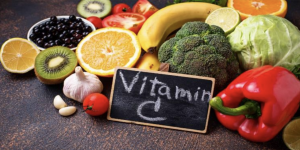
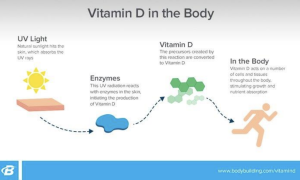
Click Here for Few Minutes Link.
➡️UPSC 2023 General Studies Course: https://sleepyclasses.com/general-studies-for-upsc/
➡️Sociology Optional for UPSC: https://sleepyclasses.com/sociology-for-upsc/
➡️Political Science and IR for UPSC: https://sleepyclasses.com/psir-for-upsc/
➡️Signup here – https://sleepyclasses.com/
Have any query related to UPSC preparation: 📞Contact Us ► Toll-Free: 1800 890 3043 ► Mobile: 6280133177 ► Email: Sleepy.Classes@gmail.com ► WhatsApp: 6280133177

